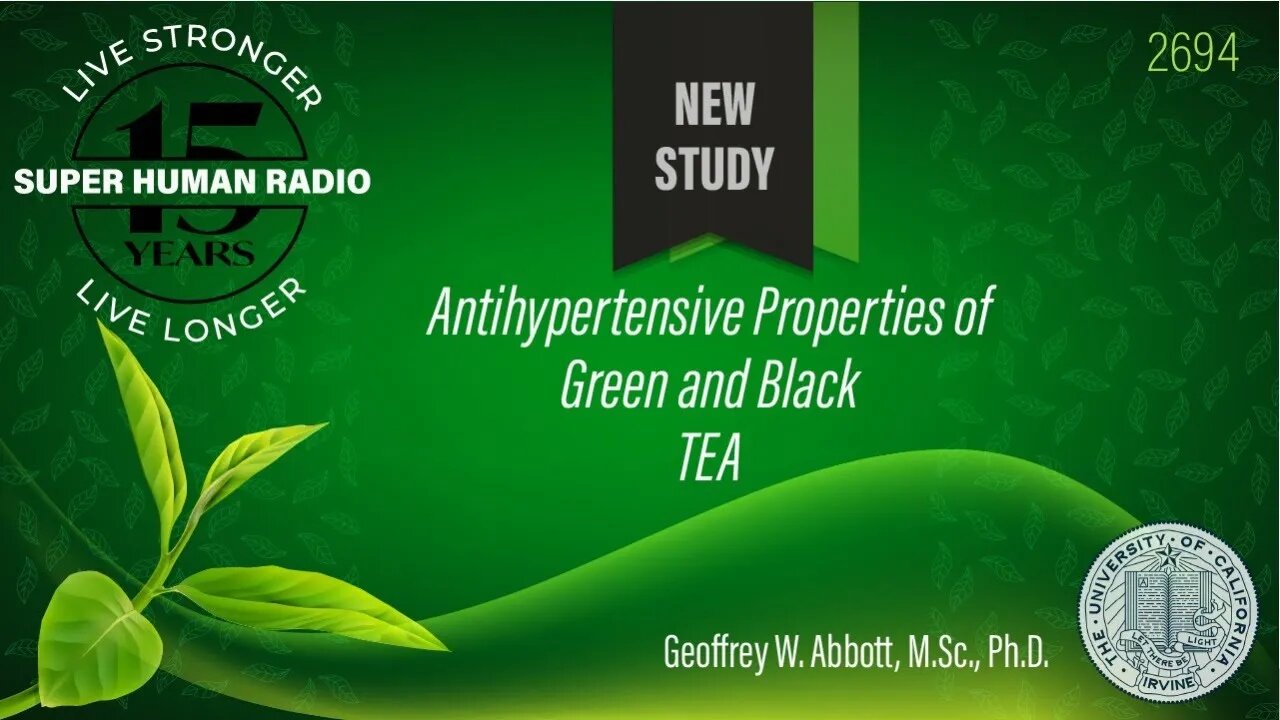Premium Only Content

Antihypertensive Properties of Green and Black Tea
Antihypertensive Properties of Green and Black Tea Guest: Dr. Geoffrey W. Abbott, M.S., Ph.D.
A new study from the University of California, Irvine shows that compounds in both green and black tea relax blood vessels by activating ion channel proteins in the blood vessel wall. The discovery helps explain the antihypertensive properties of tea and could lead to the design of new blood pressure-lowering medications.
Published in Cellular Physiology and Biochemistry, the discovery was made by the laboratory of Geoffrey Abbott, PhD, a professor in the Department of Physiology and Biophysics at the UCI School of Medicine. Kaitlyn Redford, a graduate student in the Abbott Lab, was first author of the study titled, "KCNQ5 potassium channel activation underlies vasodilation by tea."
Results from the research revealed that two catechin-type flavonoid compounds (epicatechin gallate and epigallocatechin-3-gallate) found in tea, each activate a specific type of ion channel protein named KCNQ5, which allows potassium ions to diffuse out of cells to reduce cellular excitability. As KCNQ5 is found in the smooth muscle that lines blood vessels, its activation by tea catechins was also predicted to relax blood vessels - a prediction confirmed by collaborators at the University of Copenhagen.
#antihypertensive #greentea #blacktea
-
 1:13:23
1:13:23
Super Human Radio Podcast
1 year agoThe Legend of Christian Boeving
134 -
 LIVE
LIVE
Alex Zedra
2 hours agoLIVE! Trying to get achievements in Devour
2,398 watching -
 2:00:43
2:00:43
The Quartering
5 hours agoThe MAGA Wars Have Begun! Vivek & Elon Get Massive Backlash & Much More
62.5K18 -
 1:25:53
1:25:53
Kim Iversen
3 days agoStriking Back: Taking on the ADL’s Anti-Free Speech Agenda
52.3K16 -
 49:35
49:35
Donald Trump Jr.
9 hours agoA New Golden Age: Countdown to Inauguration Day | TRIGGERED Ep.202
133K138 -
 1:14:34
1:14:34
Michael Franzese
7 hours agoWhat's Behind Biden's Shocking Death Row Pardons?
57K38 -
 9:49
9:49
Tundra Tactical
6 hours ago $5.35 earnedThe Best Tundra Clips from 2024 Part 1.
48.5K6 -
 1:05:19
1:05:19
Sarah Westall
6 hours agoDying to Be Thin: Ozempic & Obesity, Shedding Massive Weight Safely Using GLP-1 Receptors, Dr. Kazer
50.9K11 -
 54:38
54:38
LFA TV
1 day agoThe Resistance Is Gone | Trumpet Daily 12.26.24 7PM EST
38.4K6 -
 58:14
58:14
theDaily302
15 hours agoThe Daily 302- Tim Ballard
42.5K1